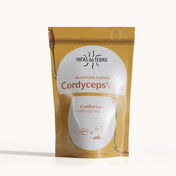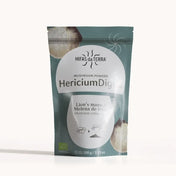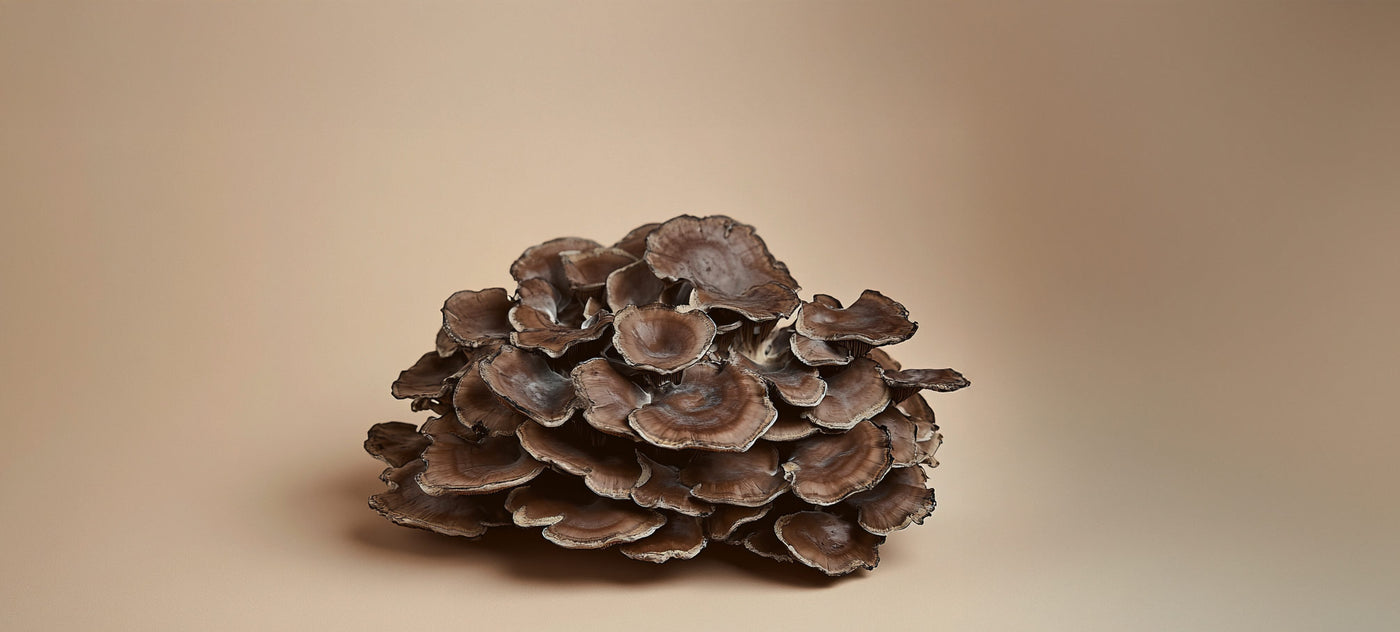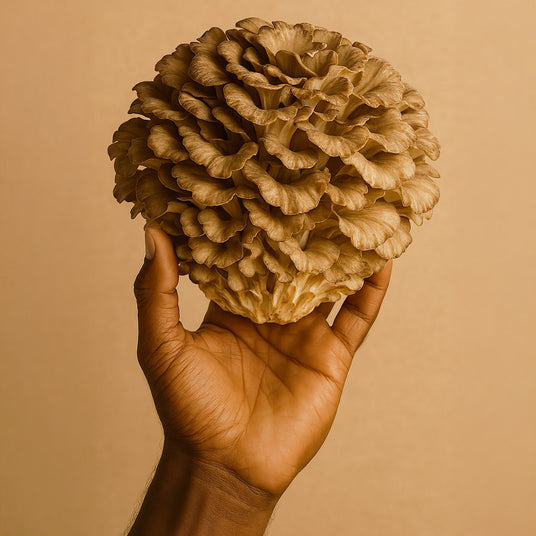
ESSENTIAL NOTES ON THE “DANCING MUSHROOM”
Actually, the G. Frondosa contains beta-glucanos whose structure is more complex than those present in cereals such as oatmeal. However, this structure is directly related to its action. It also contains provitamin D, ergotinein and gaba. In summary, its nutritional profile is very interesting, as well as its bioactive molecules.
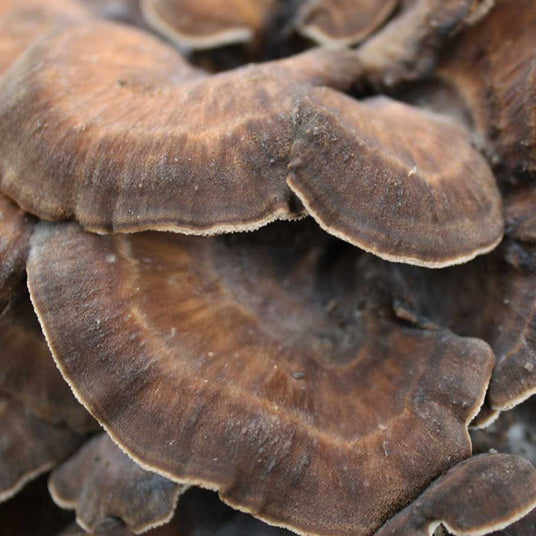
DOCUMENTED USES OF MAITAKE
Girgola, along with Reishi and Shiitake, is a mushroom of interest due to its chemical composition. However, this species is also consumed as food, which is the simplest—but also least concentrated—way of incorporating its substances into the body. Therefore, to make the most of its qualities, the most concentrated form of Maitake is the extract in the form of a nutritional supplement. Food supplements are not a substitute for a healthy and balanced diet. Active biomolecules Thanks to a natural process, its active biomolecules can be concentrated to obtain an extract that can be consumed in combination with other species (https://hifasdaterra.co.uk/products/mico-mix-pure-excerpts-from-reishi-shiitake-and-maitake‘>Mico-Mix, Mico-Five and HIFAS-Detox). There are also other forms obtained from dehydrating and grinding the fruiting body of the fungus. This is why it is colloquially called “micronised powder”. An example of this format is found in Bio-Defense.
Products with Maitake
-
HIFAS-Detox (Maitake and Polyporus extract) capsules
WITH POLYPORUS AND MAITAKE
From 34,00 €42,50 €Unit price /Unavailable -
Mico Mix (Shiitake, Reishi, Maitake) Capsules
HEALTHY MAINTENANCE OF CIRCULATORY FUNCTION*
57,00 €60,00 €Unit price /Unavailable -
Mico Five (Chaga, Reishi, Maitake, Shiitake, Sun mushroom) Capsules
SUPPORTS IMMUNE RESPONSE*
From 40,00 €50,00 €Unit price /Unavailable
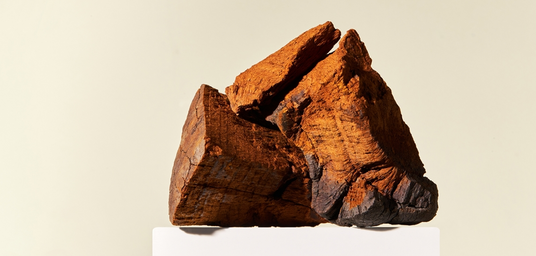
Maitake cultivation
As we have commented, it is a fungus that grows mainly on brown or old or inert oaks. Its crop abroad is quite complex, so it is usually done artificially inoculating touches of cuts cut. Likewise, it is possible to inoculate the trunks of them by subsequently burying them to maintain the required humidity levels.
Cultivation in stumps
As another example of the cultivation system of this fungus, there are the perforated bags using sterilized sawdust and rice flours. Moreover, some authors refer to their cultivation on pines. Although it is not usual, this could be related to Paul Stamets's theory that states that this species appeared on coniferous stump Very popular edible mushroom in Asia, especially in Japan. The cultivation techniques of this fungus were perfected in the 70s of the twentieth century.
Do you want to know more?
Habitat and distribution
Habitat and distribution
This mushroom grows worldwide in deciduous forests in temperate climates. It is mainly found on the stumps of old oak trees, but also on chestnut, beech and lime trees. In the same way, the G.Frondosa, presents a wide distribution in the temperate areas of the northern hemisphere, passing from Europe to northern North America, Japan and China. In the early stages of its development, this species is soft and suitable for its kitchen; On the other hand, as it grows, it acquires a woody consistency, which hinders its consumption as food. Given these circumstances, it is usually consumed through Food accessories.
Mycological notes
Mycological notes
The G.Frondosa belongs to the order of PORIALS, family Poriaceae and gender Tap, in which two species are included: G. Frondosa and G. Umbellata. Actually, the Japanese name Maitake It literally means ‘Seta Ballerina’, what could be due to its peculiar form. And it is composed of a set of small carpophores soldiers with each other that they give it Floral set aspect well ordered on an axis. Of this, their overlapping hats, of brown-grocery color, which form a fan -shaped mosaic as in traditional Japanese dances. Finally, we cannot forget that this mushroom is typical of autumn, appearing with the arrival of the first rains on touches of cut trees. Your fruitful body is large size, being able to reach 20 kg of weight and 60 cm high.
The culture in bioreactors
The culture in bioreactors
Maximum quality, purity and power in our production systems
One of theHIFAS QUALITY SYSTEM, making the difference with respect to other products in terms of purity and premium quality.
R&D and Maitake Studies
R&D and Maitake Studies
- Hifas da Terra conducts studies to improve fungus production processes and optimize the development of new biotechnological base ingredients
- Hifas da Terra has, in its wide mycoteca (Micological Bank Hifas), its own strains isolated from the Iberian Peninsula that selects for the development of its formulas
- Hifas da Terra develops multiple studies in collaboration with research centers and universities.
Curiosities
Curiosities
- Some taxonomists believe that the name Grifola derives from Grifone, a mythological animal with the head and wings of an eagle, but with the legs and tail of a lion. Frondosa means “leaf-shaped”, as the fruiting body looks like overlapping leaves. In Japan, it is known as the “dancing mushroom” because, in the past, anyone who found one would dance with joy at the thought of the profit they would make from their discovery. According to Japanese texts, samurai were the main buyers of this species because of its qualities.













